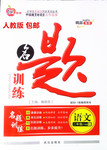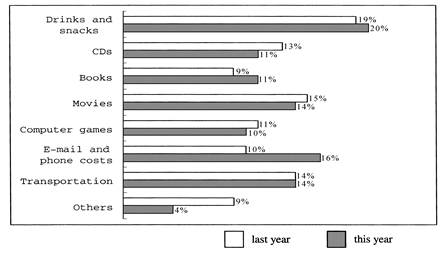题目内容
When you are in trouble,whom will you tell the problems to and ask for help? Someone has made a survey in a middle school.500 students were asked to choose one answer among friends or classmates,parents,head teacher and teachers.Here is the result.Please read the chart and try to get some information.
小题1:Most of the students would like to talk about their problems with _________.
小题2:Less than a quarter of the students chose parents, the most possible reason
is
小题3:According to the fact that only 9%of the students wanted to communicate with their head teacher or teachers,what is the best suggestion?
小题1:Most of the students would like to talk about their problems with _________.
| A.friends or classmates |
| B.parents |
| C.head teacher |
| D.teachers |
is
| A.parents don’t love their children |
| B.children don’t trust their parents |
| C.parents aren’t able to give good advice |
| D.sometimes parents and children can’t understand each other |
| A.The students should work harder. |
| B.The students should listen to the teachers more carefully. |
| C.The teachers should be more strict with the students. |
| D.The teachers should pay more attention to the students’ feelings. |
小题1:A
小题1:D
小题1:D
试题分析:本篇短文的主要信息通过一个扇形统计图表达了出来,通过这个统计图我们可知孩子们最相信的是同学和朋友。从而启发家长老师应如何来与孩子们打交道。
小题1:通过图表我们可知有80%的同学喜欢和同学朋友谈论自己的问题。占大部分,故选A。
小题2:通过分析四个选项可知选D为最佳答案。有时父母和孩子们不能很好地相互理解。
小题3:选项ABC是大部分老师的通常做法,故老师需要注意到就是多注意学生的感受。故选D。
点评:本篇短文的主要信息通过一个扇形统计图表达了出来,故阅读中一定要读懂图标信息,分析这些数据表达的含义,进行适当推理,完成阅读。

练习册系列答案
 开心快乐假期作业暑假作业西安出版社系列答案
开心快乐假期作业暑假作业西安出版社系列答案 名题训练系列答案
名题训练系列答案
相关题目
